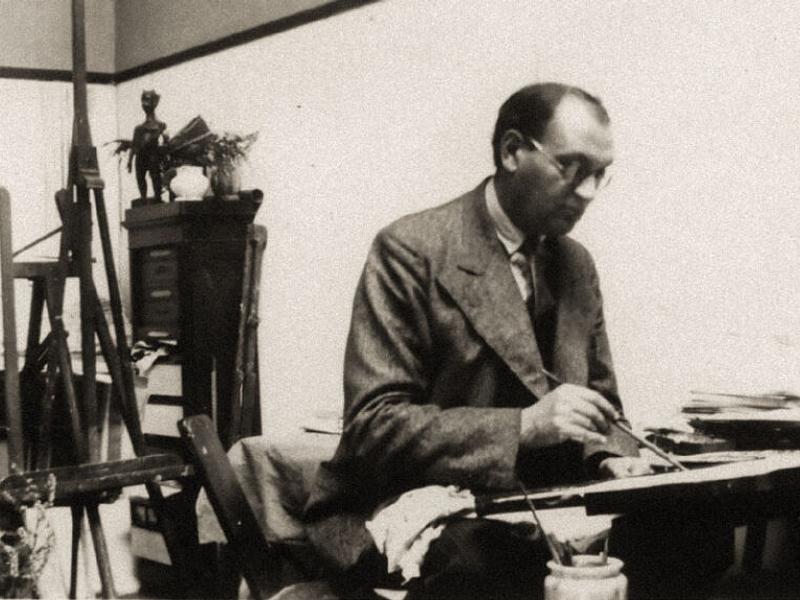Robert Falk

Robert Rafailovich Falk (15 (27) October 1886, Moscow - October 1, 1958, Moscow) was a famous Russian painter, a prominent representative of the avant-garde and art nouveau. He was born in Moscow and studied fine arts at the school-studio of Yuon and Dudich (1904-1905), in the studio of Mashkov, in the School of sculpture, painting and architecture (1905-1909). In 1910, the artist Robert Falk became one of the founders of the Jack of Diamonds. In 1928 he went on a business trip abroad and lived in Paris until 1937. For the first time pictures of Robert Falk were presented to the wide public in 1939 at the exhibition in the House of Writers.
Characteristics of the artist's work: Robert Falk's paintings are mainly portraits, still lifes, landscapes: painted with expressive volume of forms; with angular mosaic spots of saturated colors. The artist's early paintings are characterized by a certain gloominess, hidden dramatism. Years later, the master's painting became more subtle and complex.
The artist was a member of the association "Jack of Diamonds" and participated in its exhibitions. Like other "diamonds of diamonds", it did not pass fascination neoprimitivism. He asserted himself decisively in this field (which was not easy - the Jack of Diamonds loved this style, and it was no wonder to get lost against the background of Larionov, Goncharova and Mashkov). "See Landscape with Sail and Landscape with Bridge.
Like other "jacks," he actively painted still lifes. In the works of the 1910s, you can already see his passion for color and "object lyricism" - in this, perhaps, among the "Jacks" was not equal. His cubes, pyramids and cones are filled with surprising tenderness and softness.
One of the program paintings demonstrating Falk's "lyrical cubism" is the portrait of Midhat Refatov (1915). Falk uses cubist techniques not for the sake of implementing a certain system, not as a way of painting "now this way," but to convey the lyrical state of the hero.
Falk's fascination with Cézanne gains particular strength from about 1913. During these years he travels extensively in the Crimea and actively paints. In the Crimean landscapes, the peculiarities of his plastics, the depth of penetration into the essence of the depicted objects and the sense of rhythm that distinguishes his paintings (compare: Falk and Cezanne, and a couple of other landscapes in blue tones - Falk and Cezanne) clearly manifested themselves.